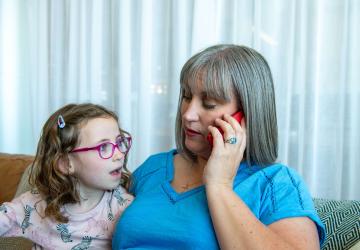Our policy for ensuring child protection.
Safeguarding
Creating a safe and welcoming environment, where everyone is respected and valued, is at the heart of safeguarding. It's about making sure that STAMMA's activities are run in a way that actively prevents harm, harassment, bullying, abuse and neglect*. It's also about being ready to respond quickly and appropriately if there is a risk, concern or problem.
Within the context of safeguarding, children are automatically regarded as vulnerable, so we need to be particularly thoughtful about our procedures where the organisation comes into contact with children. We are further aware that children with disabilities, in care, from minority ethnic backgrounds, or who are LGBTQIA+ may be at greater risk of the harms listed.
For the purposes of this policy, anybody below the age of 18 is regarded as a child.
*Definitions of some of these terms are provided at the end of this document.
STAMMA recognises its responsibilities for child protection
In addition to STAMMA's overarching safeguarding policy, the following provisions apply:
- At least one of the Safeguarding Leads must have received annual safeguarding training with a focus on safeguarding of children.
- A Safeguarding Lead will be directly involved in the planning of any events where children are a target audience.
- Where staff, trustees or volunteers are working directly with children as a primary part of their role or activity, criminal record checks including barred lists will be carried out.
- The number of under-18s accessing the helpline services will be monitored on a monthly basis so that associated safeguarding risks can be identified and helpline systems and procedures modified if appropriate.
Definitions
These definitions are taken from the UK's Working Together To Safeguard Children document, published July 2018.
Abuse
A form of maltreatment of a child. Somebody may abuse or neglect a child by inflicting harm, or by failing to act to prevent harm. Harm can include ill treatment that is not physical as well as the impact of witnessing ill treatment of others. This can be particularly relevant, for example, in relation to the impact on children of all forms of domestic abuse. Children may be abused in a family or in an institutional or community setting by those known to them or, more rarely, by others. Abuse can take place wholly online, or technology may be used to facilitate offline abuse. Children may be abused by an adult or adults, or another child or children.
Emotional abuse
The persistent emotional maltreatment of a child such as to cause severe and persistent adverse effects on the child's emotional development. It may involve conveying to a child that they are worthless or unloved, inadequate, or valued only insofar as they meet the needs of another person. It may include not giving the child opportunities to express their views, deliberately silencing them or 'making fun' of what they say or how they communicate. It may feature age or developmentally inappropriate expectations being imposed on children. These may include interactions that are beyond a child's developmental capability, as well as overprotection and limitation of exploration and learning, or preventing the child participating in normal social interaction. It may involve seeing or hearing the ill-treatment of another. It may involve serious bullying (including cyber bullying), causing children frequently to feel frightened or in danger, or the exploitation or corruption of children. Some level of emotional abuse is involved in all types of maltreatment of a child, though it may occur alone.
Physical abuse
A form of abuse which may involve hitting, shaking, throwing, poisoning, burning or scalding, drowning, suffocating or otherwise causing physical harm to a child. Physical harm may also be caused when a parent or carer fabricates the symptoms of, or deliberately induces, illness in a child.
Sexual abuse
Involves forcing or enticing a child or young person to take part in sexual activities, not necessarily involving a high level of violence, whether or not the child is aware of what is happening. The activities may involve physical contact, including assault by penetration (for example, rape or oral sex) or non-penetrative acts such as masturbation, kissing, rubbing and touching outside of clothing. They may also include non-contact activities, such as involving children in looking at, or in the production of, sexual images, watching sexual activities, encouraging children to behave in sexually inappropriate ways, or grooming a child in preparation for abuse. Sexual abuse can take place online, and technology can be used to facilitate offline abuse. Sexual abuse is not solely perpetrated by adult males. Women can also commit acts of sexual abuse, as can other children.
Neglect
The persistent failure to meet a child's basic physical and/or psychological needs, likely to result in the serious impairment of the child's health or development. Neglect may occur during pregnancy as a result of maternal substance abuse. Once a child is born, neglect may involve a parent or carer failing to:
a) provide adequate food, clothing and shelter (including exclusion from home or abandonment)
b) protect a child from physical and emotional harm or danger
c) ensure adequate supervision (including the use of inadequate caregivers)
d) ensure access to appropriate medical care or treatment.
It may also include neglect of, or unresponsiveness to, a child's basic emotional needs.
If you have a safeguarding concern about STAMMA, please contact us by phone on 020 8983 1003, or by email at hello@stamma.org































